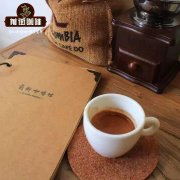Historical stories, legends and grade characteristics of Kenyan coffee beans
Kenyan coffee
Coffee from Kenya has obvious acidity and strong sweetness, with a dry aftertaste. In the best Kenyan coffee, one can find intoxicating blackcurrant flavor and aroma.
Kenyan coffee: producers and exporters
Kenyan coffee beans are auctioned every Tuesday at harvest time in Nairobi. This has led to a fierce price war for the best coffee crops. Most coffee in Kenya is produced by small cooperatives rather than large Kenyan coffee farms. Kenyan coffee beans are processed by wet processing. Kenya coffee beans are graded according to the size of coffee beans, of which AA is the largest, followed by An and B, and they are smaller one after another.
Ruiru Coffee Research Station developed disease-resistant coffee Ruiru 11. This mixture has attracted the attention of coffee lovers in Kenya because it should lack some of the favorable flavor characteristics native to traditionally cultivated varieties. The Kenyan Coffee Commission is trying to promote Ruiru 11 as a viable alternative, but its rumors eclipse the taste of Ruiru 11 like low-grade coffee from a completely different country. Chemical tests should be conducted over the next few years to determine which ingredients, if any, do not exist and which produce a bad smell.
You may have thought of the importance of alphabetical hierarchy as in the past, but our Kenyan AA beans prove it. The name AA is the highest grade in scale, based on the size, shape and density of beans. After a cup, you will know why even A + is not high enough for this kind of coffee. Ripe in Kenya's rich volcanic soil, these beans have distinctive wine flavors and unique fruity flavors, which are sure to inspire taste buds even the most tired coffee lovers. The beans are roasted more lightly than the other coffee we offer (but not dark enough, not greasy) to bring out the subtle flavor that normal light roasting does not bring. Try to find out why these beans are in a leading position in similar products.
History
According to the legend of coffee history, an Arab shepherd named Caldi found his goat dancing bright red cherries around a dark green bush at the southern tip of the Arabian Peninsula. Kaldi quickly determined that the bright red cherries on the shrubs caused special euphoria, and after trying them, he learned about their powerful effects. Monks in the local monastery then use the stimulus effect to stay awake during long prayers and distribute them to other monasteries around the world. Coffee was born.
Despite the attraction of such a legend, recent botanical evidence suggests different origins of coffee beans. This evidence suggests that the history of beagan, a coffee bean on the highlands of central Ethiopia, must have somehow been brought to Yemen, which has been grown since the 6th century. After the launch of the first cafe in Cairo and Mecca, coffee became a passion, not just a stimulant.
To learn more about coffee legends and details about the history of coffee beans
Important Notice :
前街咖啡 FrontStreet Coffee has moved to new addredd:
FrontStreet Coffee Address: 315,Donghua East Road,GuangZhou
Tel:020 38364473
- Prev

Introduction to the flavor of Pu'er coffee Yunnan Pu'er coffee belongs to Arabica? what are the characteristics of taste such as
Professional coffee knowledge exchange more coffee bean information Please follow the coffee workshop (Wechat official account cafe_style) I still remember when I just bought a quilt machine and shipped it back to China with PWN Huangman, who wasted 200kg of raw beans in a year before he dared to sell them in a berry store. As for whether the research results in this year are recognized by consumers, it is no longer mine.
- Next

Kenyan coffee tastes like first love, coffee from Africa and Arabian Peninsula
Coffee from Africa and the Arabian Peninsula: Kenya is undoubtedly the most admired coffee of all contemporary coffee origins. Coffee was grown late, mainly in tea-drinking countries, and was introduced by the British in 1900. When Kenyans gained independence, they saw the structure of the coffee industry as an admirable vision. They have maintained technologically advanced research institutions, Lee.
Related
- Beginners will see the "Coffee pull flower" guide!
- What is the difference between ice blog purified milk and ordinary milk coffee?
- Why is the Philippines the largest producer of crops in Liberia?
- For coffee extraction, should the fine powder be retained?
- How does extracted espresso fill pressed powder? How much strength does it take to press the powder?
- How to make jasmine cold extract coffee? Is the jasmine + latte good?
- Will this little toy really make the coffee taste better? How does Lily Drip affect coffee extraction?
- Will the action of slapping the filter cup also affect coffee extraction?
- What's the difference between powder-to-water ratio and powder-to-liquid ratio?
- What is the Ethiopian local species? What does it have to do with Heirloom native species?

